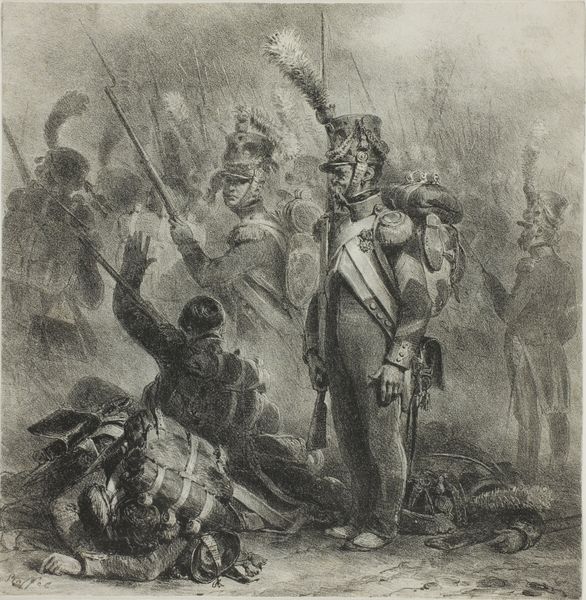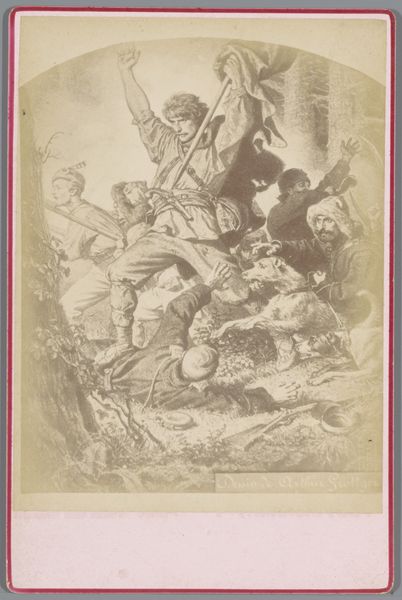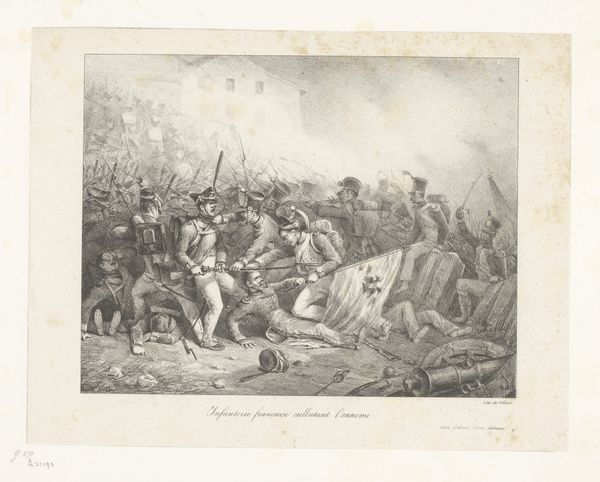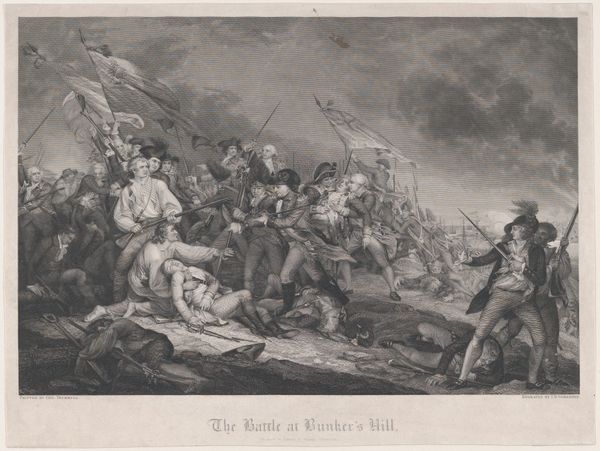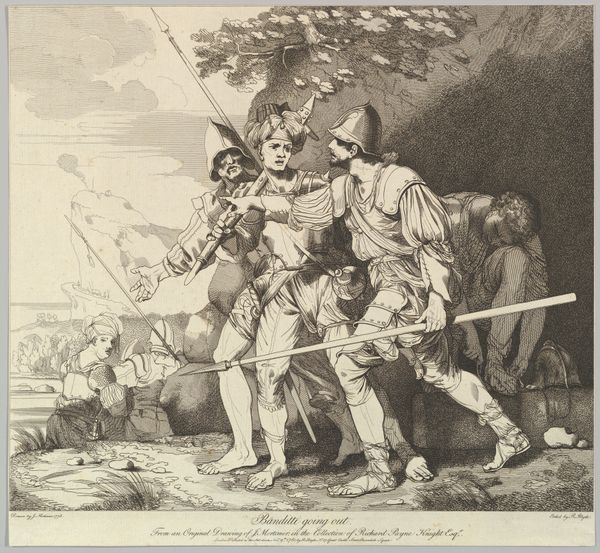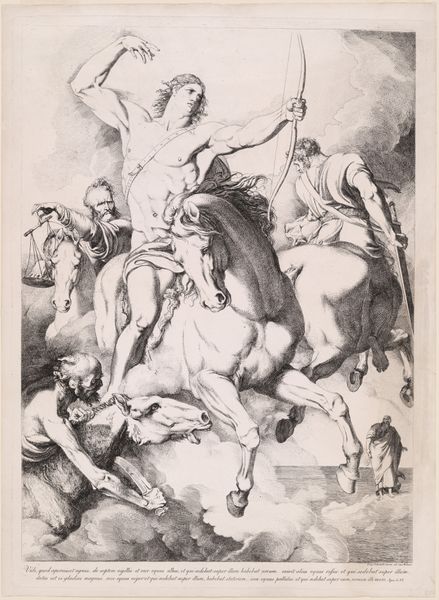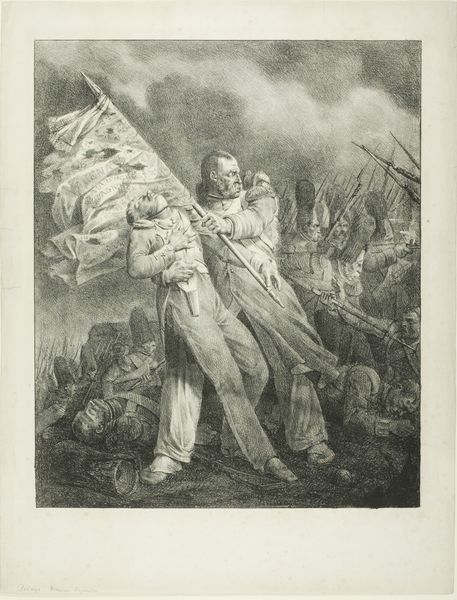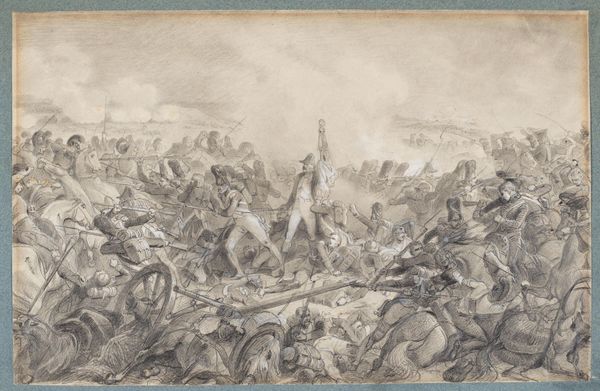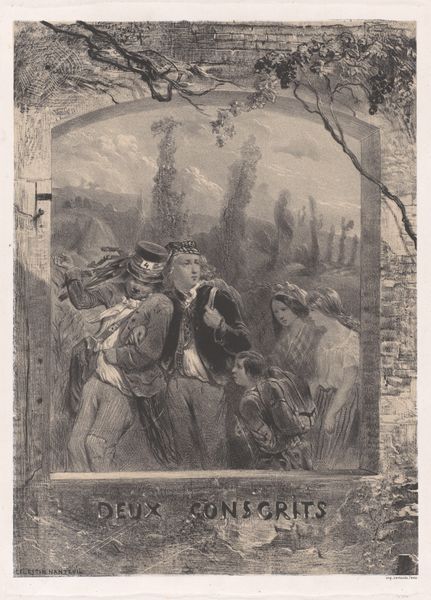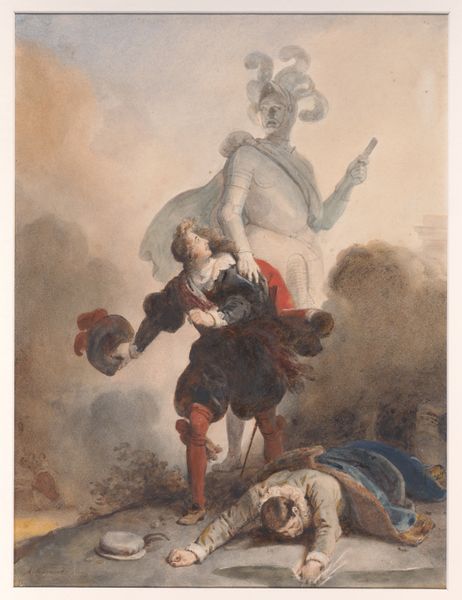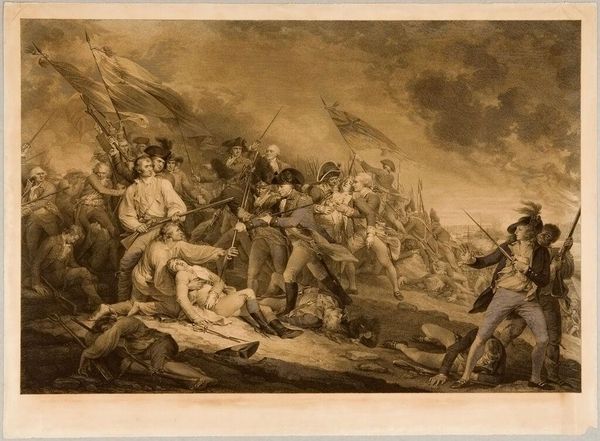
painting, charcoal
#
portrait
#
narrative-art
#
painting
#
charcoal drawing
#
figuration
#
charcoal art
#
oil painting
#
group-portraits
#
charcoal
#
history-painting
#
academic-art
#
watercolor
#
realism
Copyright: Public domain
Editor: Here we have Émile Bayard's "General Cambronne," created in 1879 using charcoal. It has a certain dramatic flair, I'm struck by the gray palette. What story do you think it’s trying to tell? Curator: Let’s consider the material production of this work. Bayard used charcoal, a readily accessible and relatively inexpensive medium, to depict a moment of supposed heroism amidst brutal conflict. This immediately raises questions about accessibility of art production and for whom is the history to be told? Who consumes such a nationalistic imagery, and from which class are they in? Editor: So you are thinking about this in relation to mass production, is that right? Curator: Precisely! Charcoal lends itself to reproduction, which, in the late 19th century, was increasingly important. It asks who could afford such art. The narrative itself becomes secondary to how such imagery might be circulated to construct popular consent with, and even demand for war. It challenges any notion of high art standing above material conditions. Editor: I see, it shifts my focus to the context of making and distributing this artwork rather than just the subject. So how can art be so instrumental? Curator: I believe, looking closely at the texture and layering of charcoal, you see both careful planning, as well as, accidental creation of a narrative, beyond artistic intent. This challenges boundaries between fine art and material culture, demonstrating how the value and meaning of artworks are intertwined with labor and production methods. Editor: That’s definitely made me think differently about "General Cambronne" – seeing beyond the surface representation and digging into its means of production is interesting! Curator: Indeed. Understanding art through this materialist lens reveals so much about historical context and its relation to mass consumption.
Comments
No comments
Be the first to comment and join the conversation on the ultimate creative platform.
